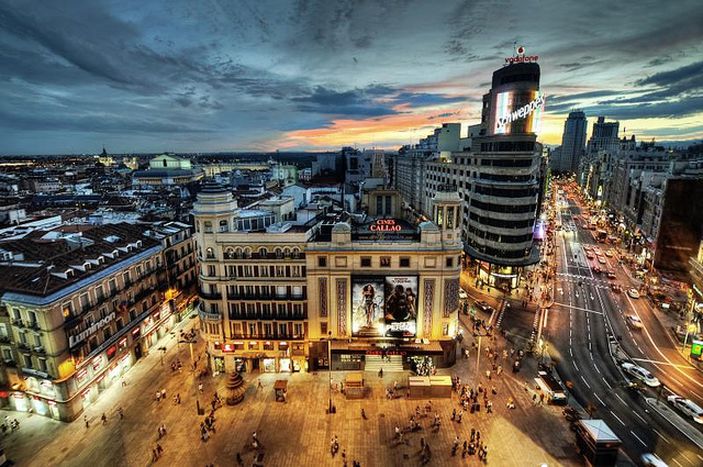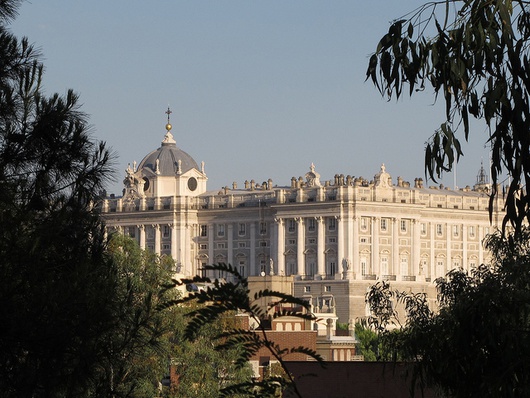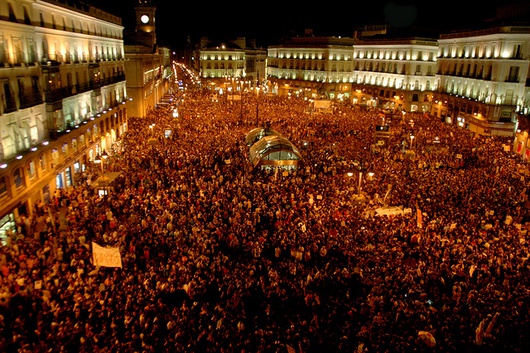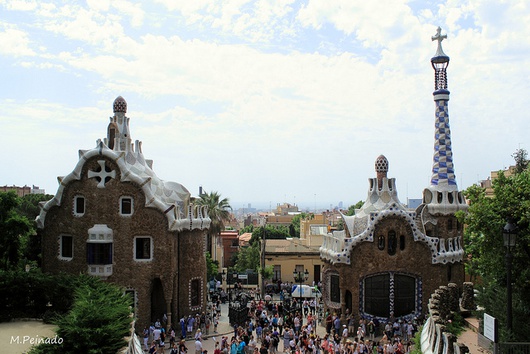
Madrid and Barcelona Vying for Tourists
Published on
Translation by:
 Steven Morand
Steven Morand
Spain is on a roll and tourism data speak for themselves. By July 2015, over 37.5 million foreigners visited our country, with Madrid and Barcelona topping the favourite destination charts.
Against a tense background of secessionist claims, let’s see how Madrid and Barcelona fare as European and international tourist resorts.
Madrid
When you think of Madrid, Spain’s flag along with its recent history immediately spring to mind. And if you take a stroll down into the city centre to Palacio Real, Plaza de Oriente or Teatro Real, you will find yourself in 'The Madrid of the Austrians'. Ever since Felipe II set up the Spanish court in Madrid in the 16th century, Spain’s heart and grandeur have become a feature of the city.
 Now, obviously, Madrid’s best claim to be a top holiday resort has to be its festivity, with great parties, an active night life and lively terraces, although it should be pointed out that professional life here is equally bustling. Its sky, by all accounts the finest in Spain, is also a valuable asset as its outstanding brightness and high percentage of clear weather throughout the year ensure that you receive your daily amount of vitamin D.
Now, obviously, Madrid’s best claim to be a top holiday resort has to be its festivity, with great parties, an active night life and lively terraces, although it should be pointed out that professional life here is equally bustling. Its sky, by all accounts the finest in Spain, is also a valuable asset as its outstanding brightness and high percentage of clear weather throughout the year ensure that you receive your daily amount of vitamin D.
 Other tourist attractions worth a visit include Plaza Mayor, San Miguel market, El Parque del retiro or La Puerta del Sol, recently thrust into the limelight as the hub of Movimiento 15M - a popular anti-austerity movement. Madrid also boasts a wide variety of theatres, music venues and intellectual events which make it the focal point of the whole Spanish culture.
Other tourist attractions worth a visit include Plaza Mayor, San Miguel market, El Parque del retiro or La Puerta del Sol, recently thrust into the limelight as the hub of Movimiento 15M - a popular anti-austerity movement. Madrid also boasts a wide variety of theatres, music venues and intellectual events which make it the focal point of the whole Spanish culture.
Barcelona
Thinking of Barcelona automatically conjures up Gaudi’s creations, as his work is inextricably linked to Barcelona. The figurehead of Spanish and Catalan modernism has graced the city with his finest achievements – El Parque Güell, la Casa Batllo, La Pedrera, and the unfinished Sagrada Familia. On top of these works of art, you can also enjoy a clear view of Barcelona’s medieval history in El Barrio Gotico, a central district where every building still retains the same architectural style as cathedral Santa Maria del Mar.
 Barcelona’s location makes it a thoroughly European city. Thanks to its major Mediterranean port where thousands of cruises depart each year, Barcelona is the most visited city in Spain. Initially drawn by the inviting scent of tapas and seaside climate, the tourist will also discover its artistic (cutting-) edge, the traditional centre of impulse for cultural novelties across the country.
Barcelona’s location makes it a thoroughly European city. Thanks to its major Mediterranean port where thousands of cruises depart each year, Barcelona is the most visited city in Spain. Initially drawn by the inviting scent of tapas and seaside climate, the tourist will also discover its artistic (cutting-) edge, the traditional centre of impulse for cultural novelties across the country.
However, although you may find flamenco shows and traditional Sevillana dresses in some shops, Catalan independence movements are keen to shake off these typically Spanish symbols as they are not typical of Catalonia, an unseen phenomenon in other parts of the country like Andalucia or Madrid. Interestingly, this is the only region where bullfighting, another Spanish symbol, is prohibited.
Foreign expenditure in the two cities
According to a study by Global Destination Index, Barcelona and Madrid rank in the top 5 in Europa in terms of foreign investment. This figure is believed to be 6 million euros for Madrid, and as high as 12 billion for Barcelona. As yet, the latter has acted as a gateway for foreigners, but how would it affect the tourism industry if Barcelona, along with Catalonia, achieved independence?
 Two days after the elections in Catalonia, entrepreneurs, businessmen, Catalan and Spanish banks unanimously talk of a disastrous loss for Barcelona. However, when it comes to carrying the day in this tense election period, any argument may be adopted to tip the balance in favour of one or the other side.
Two days after the elections in Catalonia, entrepreneurs, businessmen, Catalan and Spanish banks unanimously talk of a disastrous loss for Barcelona. However, when it comes to carrying the day in this tense election period, any argument may be adopted to tip the balance in favour of one or the other side.
Translated from El turismo extranjero se debate entre Madrid y Barcelona


